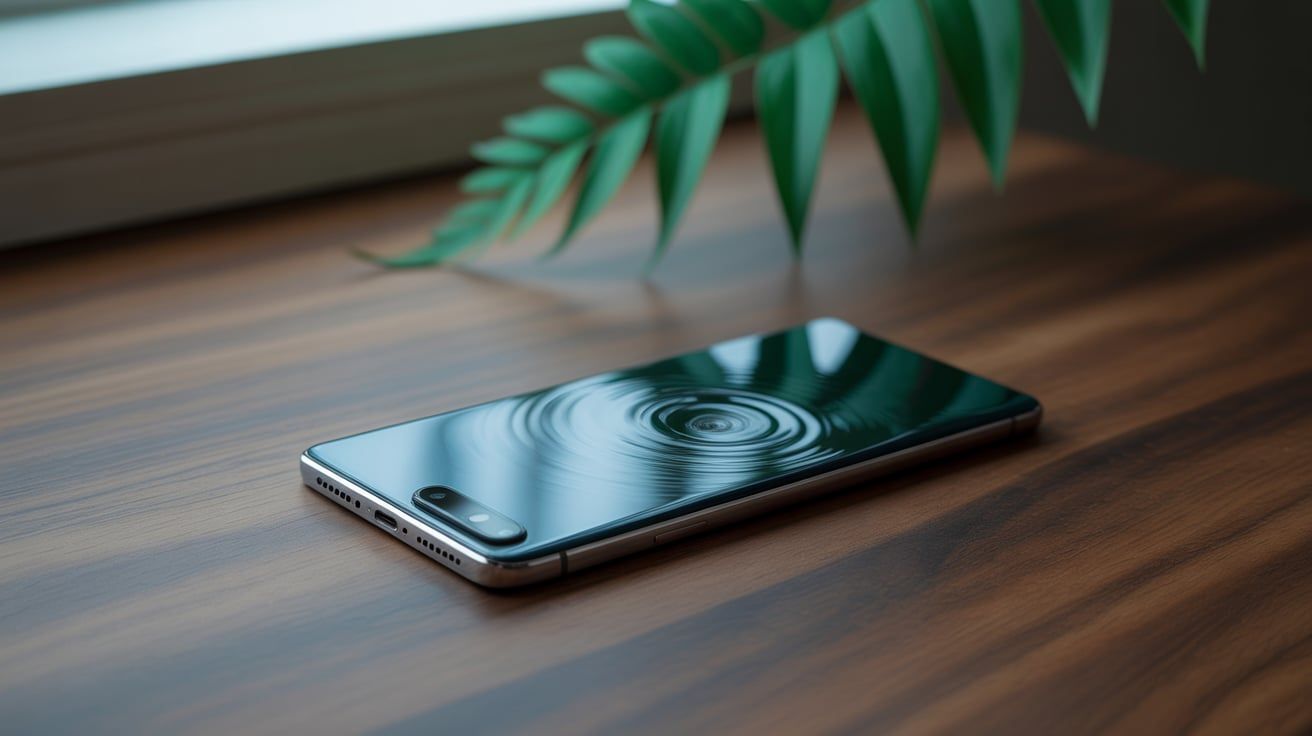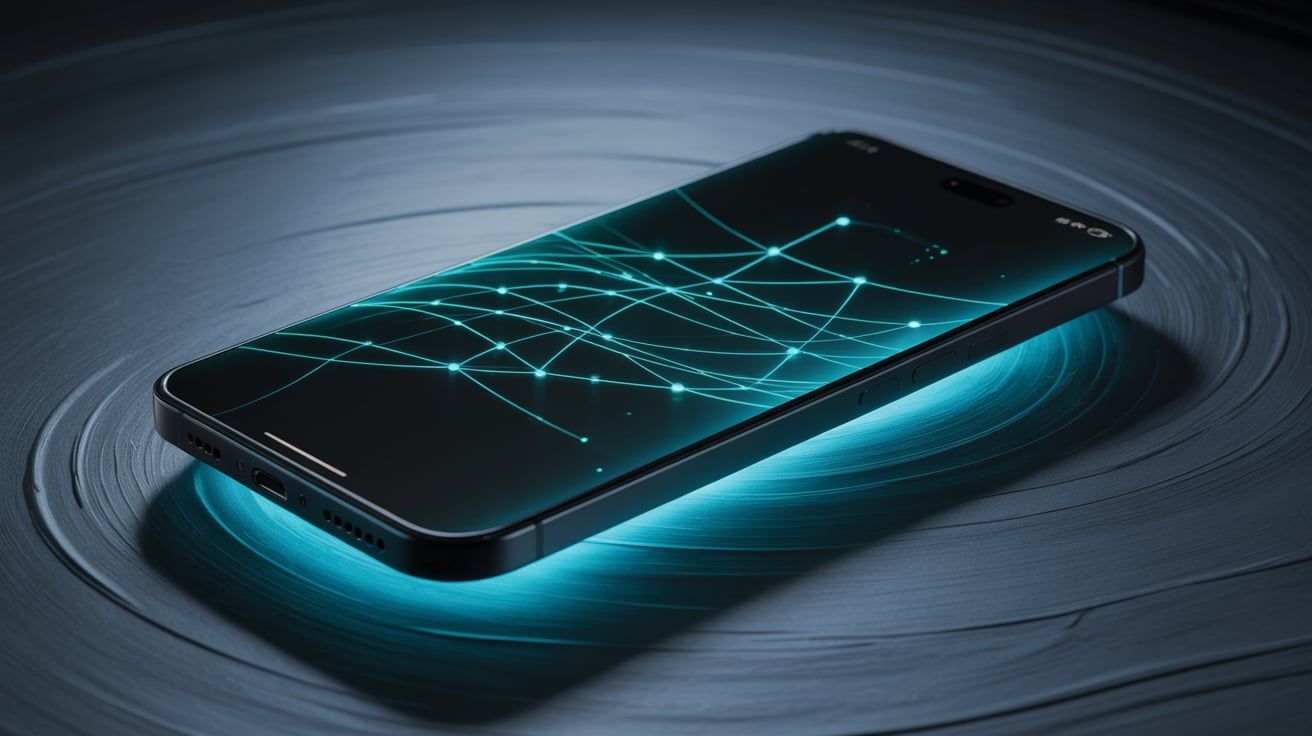Your Phone Is Literally Designed to Addict You (Here's How to Fight Back)
The Phantom Vibration: A Modern Affliction
Ever felt your phone vibrate in your pocket, only to pull it out and find… nothing? You’re not alone. This “phantom vibration syndrome” is a testament to the powerful hold our smartphones have on us. It's a physical manifestation of the anxiety and anticipation we feel, constantly waiting for the next notification, the next dopamine hit. Our brains have been rewired to expect and crave these digital interactions, and the tech companies behind these gadgets know it all too well.
The truth is, your phone isn't just a tool; it's a carefully crafted piece of technology designed to keep you engaged, scrolling, and clicking for as long as possible. From the infinite scroll of social media feeds to the unpredictable rewards of app notifications, every element is meticulously engineered to exploit our psychological vulnerabilities. This isn't some conspiracy theory; it's a well-documented reality, and understanding it is the first step towards regaining control.
The Science of Smartphone Addiction
At the heart of smartphone addiction lies the neurotransmitter dopamine. Every time you receive a like, a comment, or a new message, your brain releases a small amount of dopamine, creating a pleasurable sensation. This positive reinforcement loop encourages you to repeat the behavior, constantly checking your phone in anticipation of the next reward. This is the same mechanism that drives other addictive behaviors, and it's incredibly effective.
Furthermore, the unpredictability of these rewards makes them even more compelling. If you knew exactly when you were going to receive a notification, it wouldn't be as exciting. But the random nature of these digital interactions keeps you hooked, constantly checking your phone in the hope of finding something new and interesting. This is why social media platforms and mobile games are so addictive – they offer a constant stream of unpredictable rewards that keep you coming back for more.
The Architects of Addiction: How Apps Keep You Hooked
The software powering our smartphones is designed with one primary goal in mind: user engagement. App developers employ a range of techniques to maximize the amount of time you spend on their platforms. One common tactic is the use of "variable rewards," where the timing and nature of rewards are unpredictable, making them more enticing. Think of the slot machine analogy – you keep pulling the lever because you never know when you're going to hit the jackpot.
Another technique is the use of "social proof," where you're more likely to engage with content that's already popular. This is why social media platforms highlight trending topics and show you how many people have liked or shared a particular post. The fear of missing out (FOMO) also plays a significant role, as you're constantly bombarded with updates and notifications that make you feel like you're missing out on something important. These seemingly innocuous design choices are carefully calculated to keep you glued to your screen.
Recognizing the Signs of Problematic Phone Use
It's important to be honest with yourself about your phone usage. Are you constantly checking your phone, even when you know you shouldn't be? Do you feel anxious or irritable when you're unable to access your phone? Do you find yourself spending more time on your phone than you intended? These are all potential signs of problematic phone use. Other indicators include neglecting responsibilities, difficulty focusing, and strained relationships due to excessive phone use.
Consider tracking your screen time using the built-in features on your smartphone. This can provide valuable insights into how much time you're actually spending on your phone and which apps are consuming the most of your attention. Once you have a clear understanding of your usage patterns, you can start to identify areas where you need to make changes. Don't be afraid to seek help from a therapist or counselor if you're struggling to manage your phone use on your own.
Taking Back Control: Practical Strategies for Digital Detox
Breaking free from smartphone addiction requires a conscious effort and a willingness to change your habits. Start by setting realistic goals for reducing your screen time. Don't try to go cold turkey overnight; instead, gradually decrease the amount of time you spend on your phone each day. Use the built-in features on your smartphone to set time limits for specific apps. When you reach your limit, the app will be blocked, preventing you from mindlessly scrolling for hours.
Another effective strategy is to create "phone-free zones" in your home. Designate certain areas, such as the bedroom or dining room, as places where phones are not allowed. This can help you to disconnect from technology and reconnect with the people around you. Consider turning off notifications for non-essential apps. This will reduce the number of interruptions you experience throughout the day and help you to stay focused on the task at hand. Explore the innovation in "grayscale mode" on your phone, which can make the screen less appealing and reduce the urge to constantly check it.
Mindful Technology: Using Gadgets Intentionally
The goal isn't necessarily to eliminate technology from your life entirely, but rather to use it more mindfully and intentionally. Before reaching for your phone, ask yourself why you're doing it. Are you genuinely trying to accomplish something, or are you simply seeking a distraction? If it's the latter, try to find a healthier alternative, such as reading a book, going for a walk, or spending time with loved ones. Consider using apps designed to promote mindfulness and meditation. These apps can help you to become more aware of your thoughts and feelings, and to develop healthier coping mechanisms for dealing with stress and anxiety.
Explore the world of "digital minimalism," a philosophy that encourages you to be more intentional about the technology you use. This involves carefully evaluating the apps and services you subscribe to, and eliminating anything that doesn't add value to your life. By decluttering your digital life, you can create more space for the things that truly matter. Remember, technology should serve you, not the other way around.
Reclaiming Your Time: Rediscovering Offline Activities
One of the biggest benefits of reducing your phone use is that you'll have more time to pursue other interests and activities. Think about the things you used to enjoy before smartphones became so ubiquitous. Did you like to read, paint, play music, or spend time outdoors? Now is the perfect time to rediscover those passions. Engaging in offline activities can help you to reconnect with yourself and with the world around you. It can also provide a much-needed break from the constant stimulation of the digital world.
Consider joining a club or taking a class related to one of your interests. This can provide you with a sense of community and accountability, making it easier to stick to your goals. Spend time in nature, whether it's hiking in the mountains or simply sitting in a park. Studies have shown that spending time in nature can reduce stress, improve mood, and boost creativity. Remember, life exists beyond the screen. Embrace the opportunities to connect with the real world and rediscover the joys of offline living.
The Future of Digital Well-being: A Call for Change
Ultimately, addressing the issue of smartphone addiction requires a collective effort. Tech companies need to take responsibility for the addictive nature of their products and design them in a way that promotes user well-being. This could involve implementing features that encourage mindful usage, providing users with more control over their data, and being more transparent about the algorithms that drive engagement. We, as consumers, also have a role to play. We need to demand better from the tech companies and hold them accountable for their actions. We need to educate ourselves and our children about the potential risks of excessive phone use and promote healthy digital habits.
The future of digital well-being depends on our ability to create a more balanced and sustainable relationship with technology. This requires a shift in mindset, from viewing technology as a source of constant entertainment and distraction to viewing it as a tool that can be used to enhance our lives. Let's embrace the innovation that technology offers, but let's also be mindful of its potential downsides. Let's work together to create a digital world that is both engaging and empowering, a world where technology serves humanity, rather than the other way around. Take the first step today: put down your phone, look around, and reconnect with the world around you. You might be surprised at what you discover.



